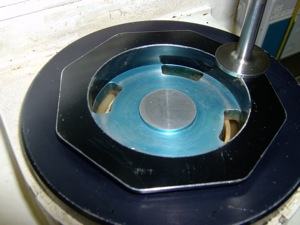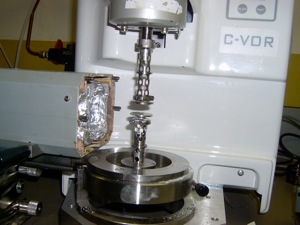Many modern materials fall somewhere between true fluids and true solids. Examples include ketchup, most plastics in their molten form, road materials like asphalts and essentially all biological materials. While the motion of these materials and the mathematical description of this motion will occupy our class time, it is worth remembering that an engineers primary task would be to discriminate between various materials in a quantitative and consistent way.
The science of materials characterization typically uses a simple configuration for which the equations of motion often simplify a great deal (or at least can be approximated). Samples of the material are then subjected to standardized tests (repeatedly) and statistically robust information is extracted from these experiments. At the frontiers of modern research the chemical, or micro-structure of the material is related to the measured, macroscopic properties.
In the above picture you can see a rheometer that uses torisonal shear. Samples are placed between the two discs, by attaching the sample to the lower disc. In one type of test a fixed traction (or a twist of the upper disc with the bottom disc held still, in this case) is applied and the displacement of the sample is measured. In another type of test a fixed displacement is induced and the strength of the response force is measured. other tests included induced oscillations, and performing tests at various temperatures (the sample may be thermally isolated from the rest of the laboratory). This well developed science often goes by the name of rheometry, and is part of the larger study of rheology.
Materials Characterization



